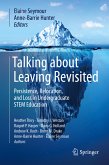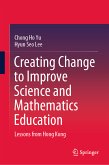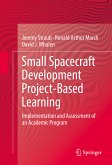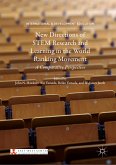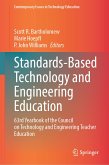This book contributes to the international debate surrounding the optimal STEM education for students in underserved schools. It incorporates detailed accounts of STEM education in Zimbabwe schools, shedding light on the challenges students and educators face in impoverished areas. In Zimbabwe, STEM education faces significant challenges such as materials and facilities, pedagogy, policy reform, access, and relevance. Some of the main issues highlighted in this book are the need for more resources, including funding, teaching materials, and adequate laboratories. Effective STEM pedagogy is hampered by an education system that emphasises the curriculum and teacher-centred focus instead of focusing on how students can be taught or learn. Research has shown that in Zimbabwe, STEM teachers must apply inventive pedagogies and suitable learner-centred STEM teaching approaches. As a result, there is a need for more STEM-related programs and courses in schools and universities to improve the opportunities for students to pursue careers in these fields. Another challenge is the need for more awareness about the opportunities and importance of STEM education and interest in STEM subjects among students, which can be attributed to a lack of exposure and understanding of the relevance and importance of these fields in today's world.
While lack of resources and other challenges hinder effectiveness, opportunity lies in promising pathways of policy and practice. In Zimbabwe, there is a varying degree of success in the implemented competence-based curriculum, which emphasises inquiry-based learning and STEM education. Finally, there is a need for early exposure to STEM-based career opportunities and for more collaboration between the government, private sector, and educational institutions to address these challenges and promote STEM education in Zimbabwe.
This book uses Zimbabwe as an example to explore STEM education in poverty. By examining the successes and challenges of STEM education in Zimbabwe, this book offers valuable insights into how STEM education can be integrated into the curriculum in countries with developing and emerging economies. This book is an essential resource for anyone interested in improving STEM education in underserved communities.
Dieser Download kann aus rechtlichen Gründen nur mit Rechnungsadresse in A, B, BG, CY, CZ, D, DK, EW, E, FIN, F, GR, HR, H, IRL, I, LT, L, LR, M, NL, PL, P, R, S, SLO, SK ausgeliefert werden.



